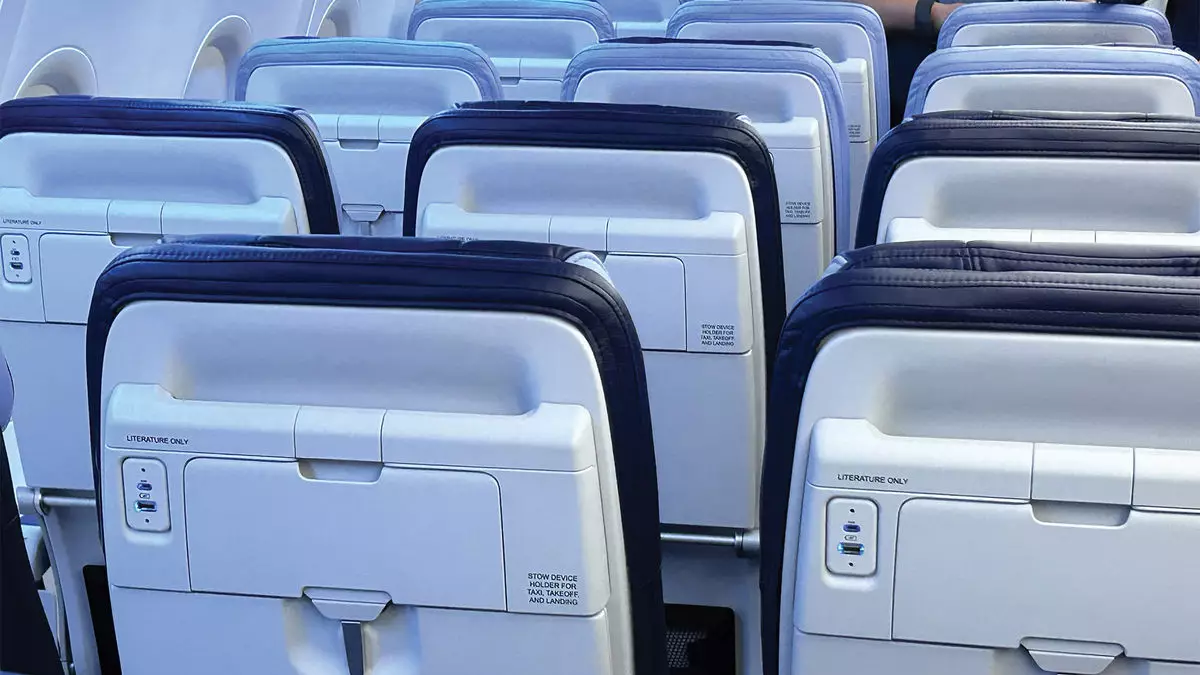In a landscape of relentless competition and evolving passenger demands, Southwest Airlines is gearing up to enhance its seating offerings. With the intention of reconfiguring some of its aircraft to include extra-legroom seats, the airline’s changes are expected to roll out in the first quarter of the next year. However, the transition to assigned seating—the new business model Southwest aims to introduce—will not be fully realized until mid-2026. This strategic shift is both an opportunity and a challenge, as it reflects the airline’s long-standing ethos of open seating, which has been a hallmark of its operational philosophy for over five decades.
The addition of extra-legroom seating, promising 34 inches of space and strategically located across the cabin’s layout, is designed to draw increased customer satisfaction in a market that often sees passengers seeking comfort over cost. Nonetheless, the airline’s commitment to tradition will see early boarding passengers have the first chance at securing these seats on reconfigured planes, educating customers on the transition period they will undergo.
CEO Bob Jordan’s remarks highlight a significant cultural shift for the airline. Elliott Investment Management, Southwest’s 11% stakeholder, has expressed skepticism regarding the airline’s implementation timeline, calling for more urgency. Their agenda includes advocating for Jordan’s removal, asserting that the pace of changes at Southwest contrasts unfavorably with competitors who are adopting new business models more swiftly. In their view, the longer timeline isn’t just frustrating; it suggests a broader issue of strategic vision.
The retrofitting initiative will see Southwest modify between 50 to 100 aircraft per month, with an aim to achieve completion by the end of next year. To introduce extra-legroom seating, the airline will reduce the space between rows on its larger aircraft, the 737-8, from 32 inches to 31 inches. This move raises an essential question: how will this impact the overall passenger experience? Southwest appears to be strategically balancing value with customer preferences, though the decision to compress space may not resonate positively with all passengers.
Furthermore, technological advancements will play a crucial role in this transition. With over 60 platforms requiring updates to manage the shift from open seating to assigned seating, the potential for operational missteps increases exponentially. Clear communication and a careful rollout will be essential to minimize risks as Jordan and executive vice president Ryan Green have emphasized.
A novel approach to pricing will also accompany the new seating configuration. Southwest plans to segment its planes into four pricing tiers, with the first five rows comprising the more expensive tickets. Additional pricing variations will differentiate between aisle, window, and middle seats. By aligning pricing strategies with the physical layout of the cabin, Southwest aims to cater to various customer segments while also driving incremental revenue. This pricing strategy is reflective of larger trends in the airline industry, where airlines are increasingly moving towards dynamic pricing models.
Moreover, Southwest is maintaining its existing fare categories, where the budget-conscious “Wanna Get Away” fare will exclude a seat assignment, while upgraded fares will include such options. By offering seat assignments as add-ons for lower fares, the airline opens up avenues for additional revenue while balancing comfort and accessibility for diverse customer demographics.
Strategic Partnerships and Future Directions
In addition to updating its seating strategy, Southwest has announced initiatives projected to generate $4 billion in incremental revenue annually by 2027. Among these initiatives is a renewed partnership with Icelandair, marking the airline’s first significant partnership in decades. This collaboration is anticipated to initiate from Baltimore and expand to other U.S. cities, thereby tapping into a broader customer base and enhancing connectivity.
This multifaceted strategy not only aims to address immediate revenue challenges but also positions Southwest Airlines to be more competitive in a rapidly changing airline industry. By targeting passenger needs through enhanced comfort, segmented pricing, and partnerships, Southwest is striving not only for sustainability but leadership within the airline sector.
While the transition to extra-legroom seating and assigned seating is fraught with potential pitfalls, it is a necessary evolution for Southwest Airlines. Balancing tradition with innovation will be crucial as the airline moves forward. The approach Southwest adopts will likely set a precedent, impacting how low-cost carriers respond to changing passenger expectations and competitive pressures. As the airline industry continues to evolve, all eyes will be on Southwest to see how this transformation unfolds.


Leave a Reply